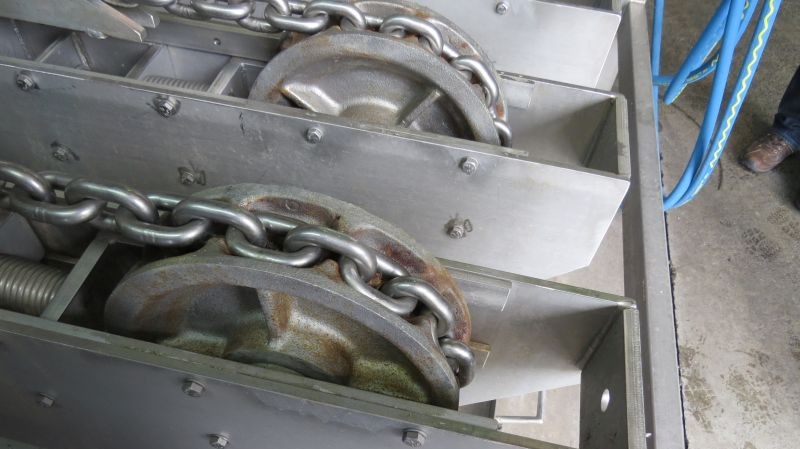What is this article about?
Product defects in machines play a central role in legal disputes. If products are defective, this can have significant consequences for the manufacturer, particularly in terms of product liability. In such cases, the manufacturer may be held liable for damage caused by the defect in the product.
Product liability for machines due to product defects is an important legal aspect that affects both manufacturers and consumers. Its aim is to ensure the safety and quality of products and to strengthen consumer protection.
The intensified competition with its ever shorter product cycles increases the likelihood that product defects will occur and that product liability damages will be claimed against the manufacturer or that you, as the customer, will have to claim product liability damages from a supplier. In order to be well positioned in the event of an opposing claim or in the case of your own claim, a high degree of competence is usually required in practice to determine whether a product or system is defective and what the legal liability situation is based on the evidence .
Examples of product defects in mechanical engineering are discussed.
Product liability for machines and systems within the meaning of the Product Liability Act (ProdHaftG) due to product defects
The legal basis for product liability can be found in §1ProdHaftG and §823(1) BGB. Manufacturers are liable for their products regardless of fault if:
- the damage is the result of a defective product or
- the fault is causal for the damage (double causality).
The reasons for liability according to the Product Liability Act are four or five (technical) error types, which are presented in Section 4.1 using real examples.
§ 3 ProdHaftG: “Defective product”
According to Section 3 ProdHaftG, a product is considered defective if it does not offer the safety that can reasonably be expected taking all circumstances into account.
In order to explain this definition in more detail, it is important to understand the context of Section 3 ProdHaftG. This paragraph forms the basis for the manufacturer’s liability for damage caused by defective products. A product is considered defective if it does not meet the safety requirements that can be expected by an average consumer, taking into account all relevant circumstances.
§ 823 BGB: Obligation to pay compensation
Section 823 of the German Civil Code (BGB) comes into play when it comes to the obligation to pay damages. Paragraph 1 of this paragraph states that whoever intentionally or negligently violates the life, body, health, freedom, property or other right of another is obliged to compensate the other for the resulting damage. It is important to note that Section 823 Para. 1 BGB does not explicitly define the product defect, but insists that
The product must not pose any danger.
So these two laws work in combination to protect consumers from the potential dangers of defective products and to hold manufacturers responsible for the safety of their products. The manufacturer has a duty to ensure that its product meets the general safety standards that consumers can reasonably expect. If the product violates these standards, the manufacturer can be held liable for any damages in accordance with Section 823 of the German Civil Code (BGB).
Overall, these legal provisions provide a clear framework for liability in the event of product defects and help ensure consumer safety. It is the responsibility of manufacturers to carefully develop, test and ensure products meet applicable safety standards to avoid potential harm and legal consequences
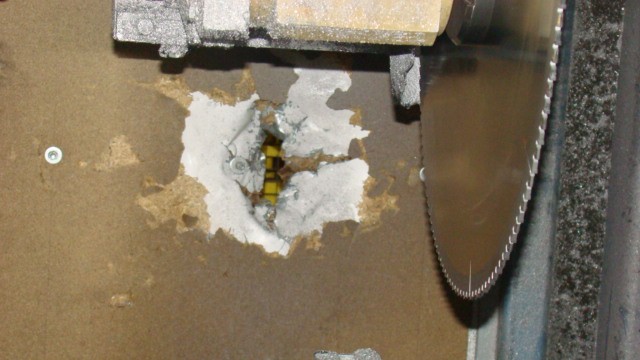
Image 1: Technically defective saw as an example of product defects in mechanical engineering.
Scope of liability for product defects in mechanical engineering
The extent of the manufacturer’s liability for a defective product applies to both
- public law,
- civil law as well
- the criminal law.
There are different liability constellations in different legal areas. In this article the focus is on the
civil liability and in particular product liability
directed. The aim of civil law claims is generally to compensate for damage to legal assets (body, health, property) as a result of defective products.
When assessing whether a product is defective and whether claims can be derived from it, a legal analysis is first required to determine which legal basis applies. The following legal bases are conceivable:
- Liability from the guarantee declaration,
- warranty for defects,
- Product liability.
Understanding product defects and their impact on liability
The Product Liability Act (ProdHaftG) in Germany stipulates that manufacturers can be held liable for damages caused by defects in their products.
The case law states that the
- inadequate security and with it
- defectiveness of the product
is accepted if the manufacturer has breached his duty of care.
In the first case, after the problem has been established, an investigation would be carried out under public law (possibly criminal law) and in the latter case under civil law.
Machine manufacturers are therefore exposed to a considerable risk of being held liable (product liability) by injured parties under civil law.
In the event of a product liability claim, injured parties must prove that the damage was caused by one of the above-mentioned types of defects and that this defect was the cause of the damage caused. The Product Liability Act therefore protects consumers from the consequences of defective products and ensures that manufacturers are responsible for the safety of their products.
Technical product errors in mechanical engineering
Product defects can have various causes and are divided into four categories. These are:
- design errors/development errors,
- Manufacturing defect,
- Instructional Error,
- Errors in product observation.
These defects can include various types of (technical) errors, which are considered grounds for product liability in the context of the law.
The terms “design error” and “development error” can have different meanings in mechanical engineering depending on the context. In practice they are mostly used interchangeably.
This means that in legal disputes in mechanical engineering, a distinction is almost never made between the development error and the design error.
Design errors in mechanical engineering
A design error only occurs if technical knowledge is violated during the planning of the product. The
error therefore predates production
and is then also typical for the entire production series.
A design defect occurs if the product does not meet the legitimate safety expectations of an average user after its construction (BGH, NJW 1990, 906).
These errors often affect operational safety and occupational safety.
Example 1: design defect
If the product or machine does not meet the requirements of Annex I of the Machinery Directive, there is usually a design defect.
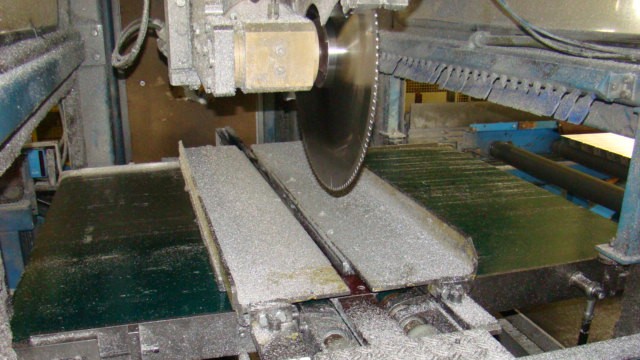
Figure 2: Design error in the saw of a machine system.
Figure 1 and Figure 2 show a saw with a saw blade. The technical problem with this saw of a machine system was that teeth on the saw blade were regularly “lost” and “flyed away” when the saw blade plunged into the profile while sawing. These broken teeth smashed into the cladding of the protective cabin. In some cases, the teeth that were broken off during the sawing process also flew against the door through which the operator’s employees were able to enter the separated area.
It is obvious that this was of course associated with a very great danger for employees.
Recommendation for “construction errors” in machines
If a design error exists, it can usually be technically proven in machines and systems or in mechanical engineering. However, neither as a party required to provide evidence nor in a legal dispute should one assume that something like this can be done quickly and particularly inexpensively.
Development errors in mechanical engineering
Development errors are those errors that can occur during the development process of a product.
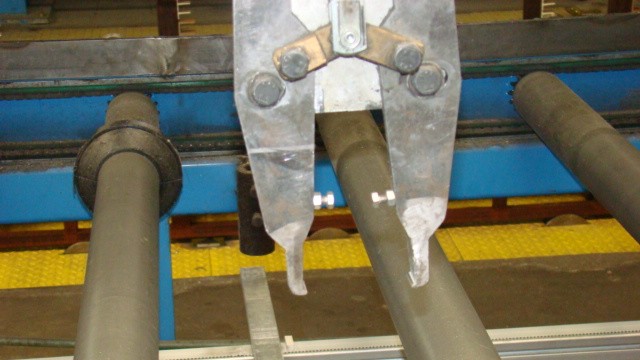
Figure 3: Development error – incorrect dimensioning of a gripper.
A development error exists if:
the error was not recognizable to the manufacturer based on the state of science and technology.
In producer liability law, the development error – in addition to the planning error – is defined as a design error.
Example 2: Development error
Figure 4 shows a system with so-called grippers (Figure 3). The task of these grippers was to grip and lift profiles on the affected system. That didn’t always work.
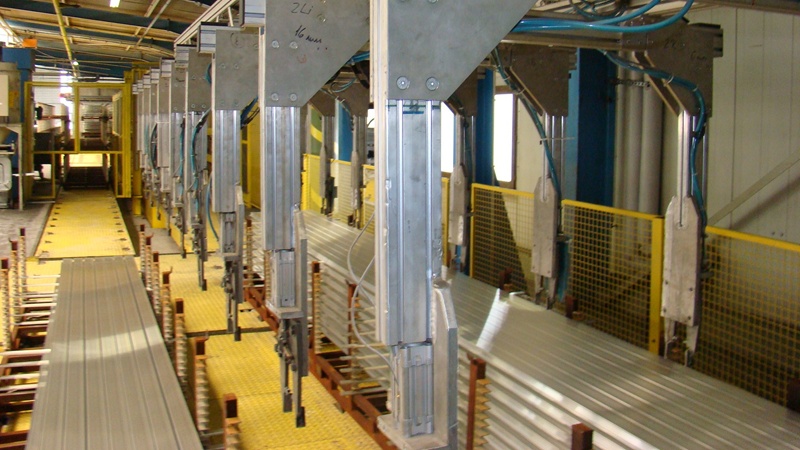
Figure 4: Development errors on grippers in mechanical engineering.
These grippers were defective in that it could be proven that they were not sufficiently dimensioned. This made it possible to technically prove that the state of the art was not adhered to. The operator’s claims against the manufacturer were enforced.
Recommendation on “development errors” in machines
Development errors, if they exist in machines and mechanical engineering, can often be proven technically. However, it can still require a significant amount of time.
Manufacturing defects in mechanical engineering
Manufacturing defects refer to errors that occur during the manufacturing process. This may include improper use of materials, incorrect assembly or other manufacturing defects. These errors can cause products to deviate from the intended specification and therefore pose safety risks.
The terms manufacturing defects and material defects are often used in parallel by lawyers in legal disputes.
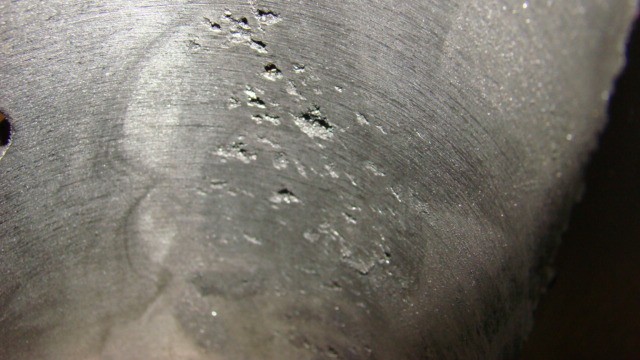
Figure 5: Manufacturing defects in mechanical engineering, often also called material defects.
If such an error leads to technical problems or even the failure of a structure, this type of error is often viewed by jurisprudence as the cause.
The big technical problem with manufacturing defects and/or material defects is that
In reality, it is often very difficult to prove the causality between this type of error and a real or assumed problem.
Example 3: Manufacturing defect
In the example shown in Figure 5, it is obvious even to the layperson that so-called voids, i.e. obvious defects, are present in the cross section. This always indicates problems with the casting process.
However, the question of is very difficult and in most cases cannot be technically proven
Causality between these obvious defects and any damage in reality.
So if components with voids do not fail in the cross-section of reality, then the cross-section may be “not pretty” in the truest sense of the word. However, if it has no technical effect, then causality has not been proven.
Recommendation for manufacturing defects/material defects in machines
If you are an operator of a system or a buyer of a machine and are looking for a product defect, please do so
initially concentrate on other types of defects than the material defect.
It is also often discussed that the chemical compositions of the materials used do not correspond exactly to the specification.
However, in the legal disputes that I know of, it is very rarely possible to prove that any deviations constitute an error and therefore a defect according to a legal assessment.
Instruction errors in machines
Instructional errors refer to deficiencies in the instructions or warnings provided with a product. Even if the product itself is technically sound, injury or damage may occur if the instructions for safe use are unclear or inadequate. In such cases, the manufacturer may be held liable for damages resulting from improper use of the product.
In reality, the majority of operating instructions are incorrect and do not meet the requirements that arise, for example, from the applicable Machinery Directive. This can have a variety of reasons.
As a result, there may be security problems.
But there are also other examples in which the operating instructions are simply incomprehensible or even incorrect, resulting in damage to products or even the machine. In such cases, there are instruction errors in mechanical engineering and the manufacturers can be held liable.
In reality, it is often very difficult to prove the causality between this type of error and a real or assumed problem.
Example 4: Instruction error
I handled a major claim that resulted from an instruction error. It involved fire damage to a system with resulting six-figure loss damage.
Technically, vibration fractures were identified in several screws. As a result, the system failed. The manufacturer had not provided any information on how to install these screws or the necessary tightening torque. It was tightened too tightly during assembly. The screws were overstressed.
Recommendation for instruction errors in machines
If you are the operator of a machine and are usually looking for an instruction error from the manufacturer, you will most likely find it in most operating instructions.
Errors in product observation in mechanical engineering
This error concerns the monitoring and control of a product after its market launch. Even if a product appears safe when it is introduced, defects can arise over time and only become apparent after a certain period of use or under certain conditions. Manufacturers have an obligation to regularly monitor their products and ensure that they continue to meet safety standards.
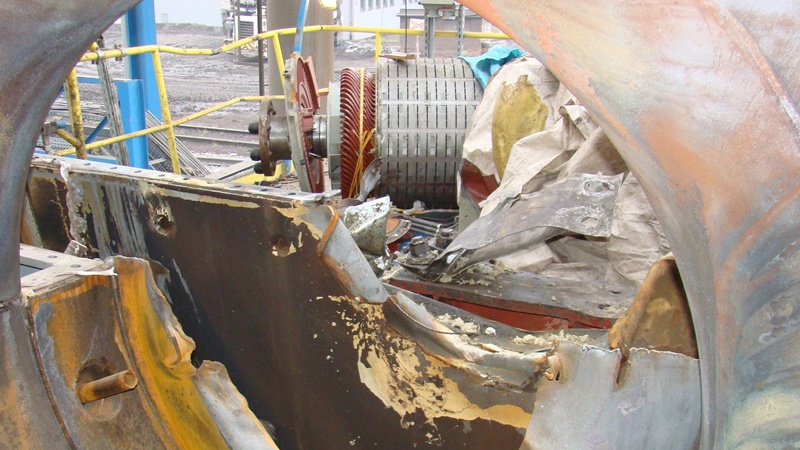
Figure 6: Product liability as a result of incorrect product observation in mechanical engineering.
It is not uncommon for manufacturers of machines and technical systems to be faced with market problems after introduction. It may be that suppliers have been changed and suddenly a production process that had worked for years is now actually causing problems, for example cracks in structures or weld seams. Of course, the manufacturers are then obliged to evaluate such feedback and check it carefully. In many cases that I accompanied, there was a product recall.
Example 5: Errors in product observation in mechanical engineering
Figure 6 shows the result of incorrect product observation. The operator reported unusual vibration behavior to the manufacturer. On the one hand, the noises were perceived and, on the other hand, the operator noticed that the measured vibration paths had increased.
The manufacturer was in close contact with the operator and still decided to let the system continue to run. The reason was that the vibration travel determined still “fit” the values of the “DIN standard” used by the manufacturer.
The end result of this misjudgment by the manufacturer was major damage, which not only affected the actual technical system, but also caused extensive damage amounting to several million euros for the failure.
Technical and legal support in the event of product defects in mechanical engineering
In the event of damage, regardless of whether you are the claimant or the defendant, it is of fundamental importance to be factual
a maximum of technical information
to determine.
Technical inspection by experts for machines
What is important for the technical and legal strategic planning that inevitably follows is that this information is compiled by forensically experienced and independent experts and, in a first step, technically evaluated on site.
Furthermore, the examination of the technical documents is necessary in order to obtain solid information for the technical assessment.
The independence of the investigation is important because internal employees often do not have an eye for what is important. That’s because most
Manufacturers are inexperienced in handling technical damages (making claims or defending against claims).
However, own departments are often involved in the damage or “fear” that they will be implicated in the cause. In order to obtain an independent presentation of the technical facts and facts for your own business interest, it is necessary to use independent technical experts (experts, consultants) in the event of damage.
The technical causes will be identified – if possible – and responsibility will be verified. This applies, among other things
- framework agreements,
- technical drawings,
- sizing,
- materials,
- Production,
- internal and external technical documentation,
- standards,
- Offers,
- orders,
- order confirmations,
- delivery notes,
- Bills,
- Initial complaints and complaint correspondence.
If the damage has already occurred, technical checks are also carried out:
- Damage process and damage analysis,
- Photos,
- laboratory reports,
- 8D reports,
- Reports etc.
The question is always whether possible errors are found, which have already been discussed in the previous sections and are often the reasons for product liability damage.
Other essential technical test aspects include:
- exact contract chain,
- the constructive responsibility,
- quality owed and delivered,
- Outgoing goods inspections, incoming goods inspections as well as the
- Detectability of the error.
Amount of damage after technical inspection
Finally, the expected amount of damage is determined.
Existing claims, testability, their plausibility, the appropriateness of remedial actions, mitigation options, and value improvements, if any, must be considered and assessed.
Legal review in the event of product defects
In addition to the analysis and evaluation by forensically experienced technical experts (“experts”), a legal evaluation is absolutely necessary in order to ensure that both the technical and the
to prepare legal and procedural (e.g. evidence situation) circumstances for decision-making in the company.
Only then can it be decided which further course of action, taking into account the technical findings and the legal examination, is “profitable” for the client, the own party, in a possible legal dispute.
Defense against product liability claims
When a company is faced with a product liability claim, it is important to develop appropriate defense strategies. This may include using insurance, working with lawyers and experts, and carefully analyzing the evidence.
Case law example
A very frequently cited ruling on jurisdiction for product defects / product liability comes from the Regional Court of Stuttgart with the case number 26 O 466/10 dated April 10, 2012.
According to this ruling, it is confirmed that manufacturers of machines with a high risk potential are obliged to take all reasonable and necessary measures through design and user information to avert the dangers that may arise from the use of the machine.
Conclusion and final thoughts
When evaluating cases of product liability for machines and product liability in mechanical engineering, the focus is on dealing with product defects as a central aspect. Manufacturers bear responsibility and can be held liable for any damage caused, with typical technical product errors such as design errors, development errors, manufacturing errors (material errors), instruction errors and errors in product observation being of crucial importance.
The scope of liability extends to public law, civil law and criminal law. When technical problems arise that indicate a possible product defect or product liability claim, precise technical and legal strategy planning becomes essential. One
secure clarification of the technical problem on the party side.
forms the starting point, followed by the internal one
legal assessment of the knowledge gained from comprehensive technical tests.
This enables the adequate development of defense strategies.
For operators who want to successfully pursue a lawsuit based on a suspected product defect, it is crucial to ensure that the suspicion is confirmed in court. By working closely with experts and thoroughly examining technical issues, companies can effectively reduce their risk of product liability claims while successfully protecting their interests.
Overall, it shows that a proactive approach that…
effectively uses the interface between technology and law,
represents the key component for successfully dealing with product liability situations in mechanical engineering.

